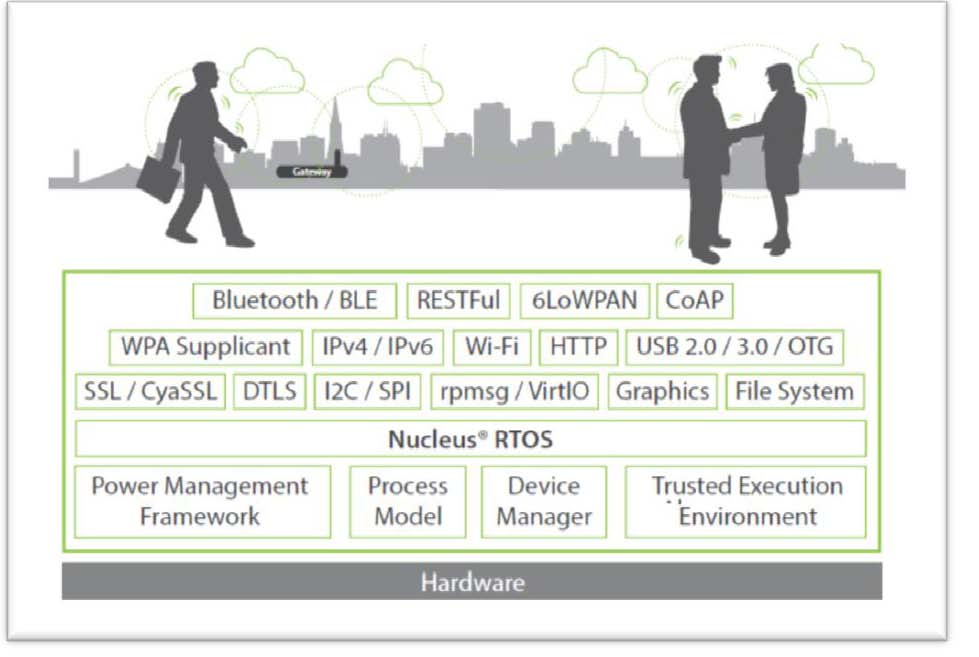As an established real time operating system shipped in over three billion devices powered by hundreds of different types of MPUs and MCUs, it is unsurprising that Mentor Graphics’ Nucleus embedded RTOS is ready to fall lockstep into the Internet of Things. New SoC architectures designed for IoT require operating systems such as Nucleus optimized for size and performance. What’s unique – and maybe a pleasant surprise even to Mentor – is that developers in the nascent wearables market have already begun to design their RTOS into medical, fitness, and security wearable devices.
 “We may be new to wearables,” said Warren Kurisu, Director of Product Management for Mentor’s Runtime Solutions, “but multicore is working its way into that market and Nucleus’s built-in power management framework, out-of-the-box connectivity, and scalability make it a perfect fit, allowing designers to address a broad spectrum of wearable devices for faster time to market. Nucleus is more than just a kernel; it is a complete stack and file system,” said Kurisu.
“We may be new to wearables,” said Warren Kurisu, Director of Product Management for Mentor’s Runtime Solutions, “but multicore is working its way into that market and Nucleus’s built-in power management framework, out-of-the-box connectivity, and scalability make it a perfect fit, allowing designers to address a broad spectrum of wearable devices for faster time to market. Nucleus is more than just a kernel; it is a complete stack and file system,” said Kurisu.
The Mentor Embedded Nucelus RTOS provides extensive protocol support for cloud connectivity including low power IoT, M2M, security, firewall, and IP-based mesh and zero-configuration networking. An integrated multicore framework with inter-process communication (IPC) and remote process life cycle supports booting up and shutting down individual processors/cores based on the use-case to conserve power.
The built-in power management framework supports the low power features in processors including dynamic voltage frequency scaling (DVFS), low power and sleep modes, and CPU idle mode. The framework manages the power state for each peripheral, set of peripherals, or the entire wearable system by using simple, high-level APIs. When changing power states, the power management framework allows coordinated control of processor modes, operating frequencies, and peripheral device operation.
The operating system provides memory space partitioning in both high-performance MPUs and resource-constrained MCUs to support software updates and upgrades, device provisioning, and software downloads from a user application store. It includes a rich IPv4/v6 networking stack, M2M protocols, and security for IoT applications and cloud connectivity.
Related resources:
White Paper: Internet of Thing (IoT) design considerations for embedded connected devices.
Mentor Graphics
www.mentor.com/embedded
Leave a Reply